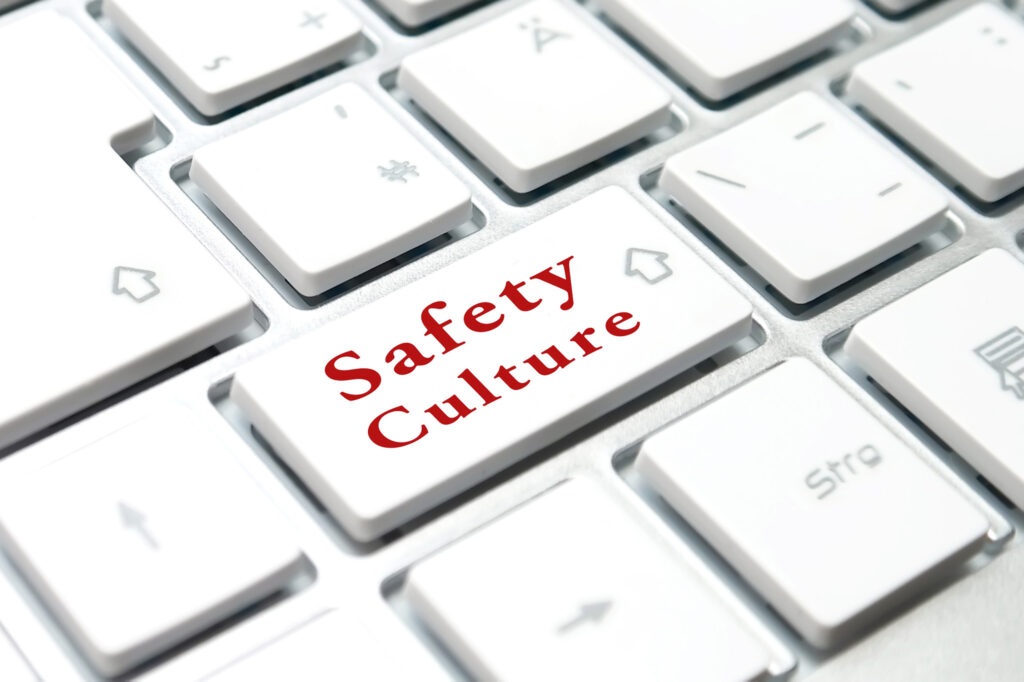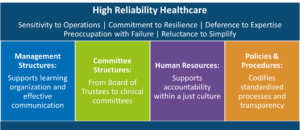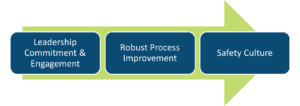
When Amy joined Mitford General Hospital as chief nursing officer, she recognized several opportunities for improvement based on her previous process improvement experience. Located in a small, rural community, the hospital’s quality and patient safety efforts centered almost exclusively on regulatory compliance, and physicians were not routinely involved in quality improvement activities.
Over time, Amy made progress by initiating quality improvement and patient safety projects. Also, she shared quality data with the Executive Committee and Board of Trustees to explain performance concerns and actions taken to address them. As peers and team members developed an interest in learning process improvement methodologies, their involvement grew in the projects.
Leadership and staff were pleased when the data indicated that these initiatives were making a positive impact on the quality of care delivered to patients. Unfortunately, about six months after Amy accepted a position in another state to be closer to family, the data started to indicate a decline in the progress made.
This scenario is all too common in organizations that rely on one or two “champions” to drive improvement efforts, rather than developing a system designed to support and firmly root these processes and behaviors. Leadership commitment and engagement, robust process improvement, and a safety culture have been universally recognized as drivers of change and are foundational in high reliability organizations (HROs). Safety cultures embrace high reliability behaviors and report unsafe conditions to make improvements across the organization. Supportive infrastructure and system design are necessary elements, however, to ensure that this alignment occurs. (Figure 1)
- Management Structures: Leadership at all levels, clinical and administrative, is responsible for setting the tone for the workforce. Management structures should embed professional development and coaching of their team members and utilize effective channels of communication to ensure that all employees are included. For example, if leadership rounding is an HRO strategy at your organization, clearly identify this as an expectation of the management role, not a choice. Medstar Union Memorial Hospital publicly communicated their expectations for team members to voice their quality and patient safety concerns. Watch this brief video to learn more: You Have My Permission – MedStar Union Memorial.
- Committee Structures: Supporting quality improvement activities should be a core function of committees. The Board of Directors and executive and physician leadership committees should not only be familiar with the organization’s quality and safety goals but be a part of developing them and align them with the organization’s strategic goals.
- Human Resources: Human Resources plays a key role in defining organizational culture. Job descriptions and performance reviews assist with hiring and retaining talented team members who will contribute to building and maintaining high reliability behaviors.
- Policies and Procedures: Over time, organizations drift from their defined standards if they are not recorded and codified through policies and procedures. If your organization appears to drift off course, you can refer to these documents to regain synergies and get back on the right path. Review them periodically and update as needed. Leadership rounding can reinforce policy and procedural expectations.
Most importantly, HRO habits must be woven into the fabric of an organization to ensure measurable and sustained improvements.
Figure 1: High Reliability System Design


